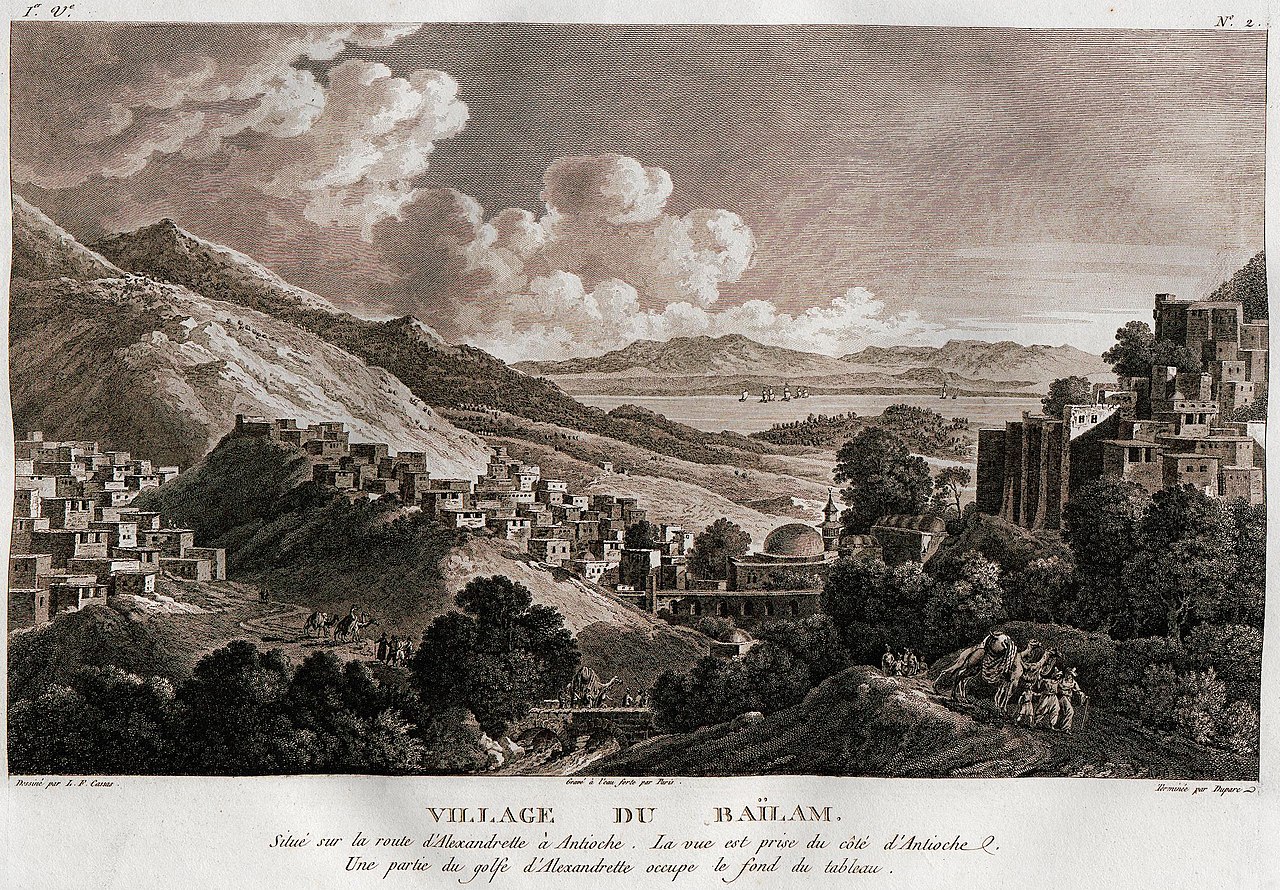
The Belen Pass is the main route across the mountains and joins the port city of İskenderun with Antakya. The pass is a key route between Anatolia, Cilicia and the Middle East.
Toponym
The word Belen (previously also Beylan, Beylam, Bailam) probably derives from the Greek word for gate (Pylan). In 1770 more people settled here and the place was called Beylan.
Armenian Population
“In the interior, on the road between Alexandretta and Aleppo, Beylan had an Armenian population of 1,800 on the eve of the war. There were a few Armenian villages in the vicinity of the town: Atık (pop. 231), Kırıkhan (pop. 176), Kanlıdere (pop. 127), Güzeli (pop. 121), and Söukoluk (pop. 174).”[1]
History
Known in earlier times as ‘Maziku Bagras’ and ‘Bab-ı İskenderun’ (Porte of Iskenderun) the pass was brought into the Ottoman Empire in 1516 after the Battle of Marj Dabiq. The Ottomans posted a guard on the pass, the main route from Syria to Anatolia, and gave the area the name Belen. In 1535 following a visit by Suleyman the Magnificent a wall was built to secure the pass along with a caravanserai, a mosque and a bathhouse, and with these facilities Turkish families were settled on the mountainside, partly acting as watchkeepers on the pass, along with the military garrison. This early Ottoman architecture is still in place.
The town grew, acquiring the typical Ottoman mix of Muslim and non-Muslim traders and villagers. The 16th century traveler Evliya Çelebi noted the harsh climate, the narrow streets and the forest on the steep hillsides. Belen was key to the defense of the Ottoman Empire during the struggle against the breakaway Egyptian army in 1827. 13,000 lives were lost during the Egyptian struggle to take the pass, they eventually succeeded but during their retreat from Anatolia were harried by bandits at Belen again.
Along with the rest of Hatay State, Belen became part of Turkey in 1939.
Destruction
Although the Armenians in the coastal areas of the Aleppo vilayet were initially to have been exempted from deportation, the authorities ultimately issued an order to deport them as well in late July 1915.[2]